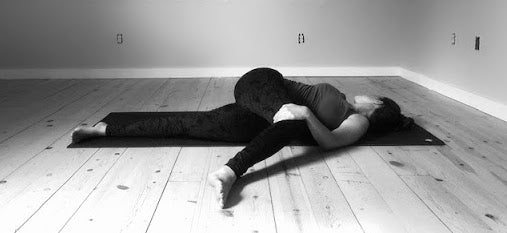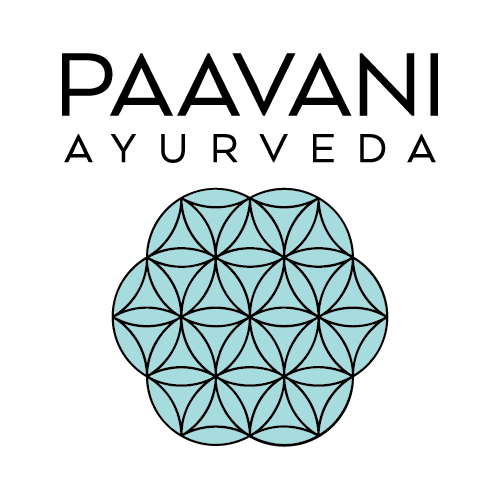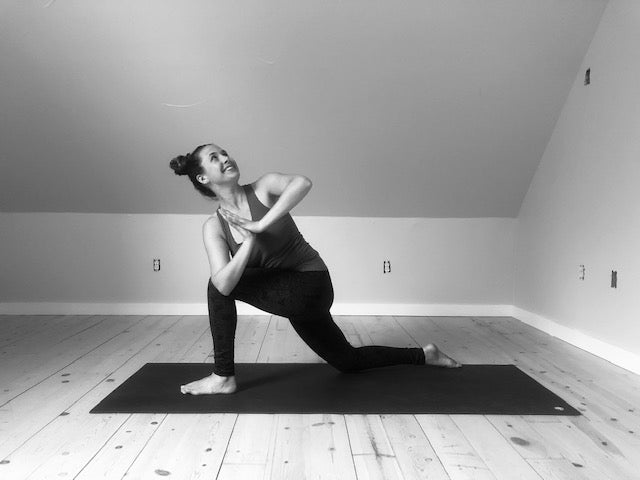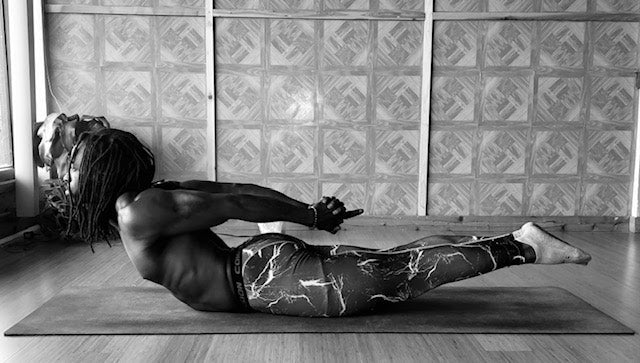
Supine Matsyendrasana: An Ayurvedic Guide to Supine Twists

Supine Matsyendrasana, or Supine Spinal Twist, helps to detoxify the body from head to toe. It also improves spinal flexibility, stretches the chest, obliques and gluteal muscles and alleviates tight hips and shoulders. From the Ayurvedic perspective, Supine Spinal Twist is beneficial for all three doshas:
Vata- Since this posture is performed lying on the back, it increases the connection to the earth; thus helping to root the light and mobile qualities associated with vata dosha. The twisting action also helps improve flexibility and also can alleviate vata type constipation.
Pitta- Pitta dosha is responsible for our metabolism and digestion of food and nutrients and because of this, our digestive systems can contain a lot of heat. Practicing Supine Matsyendrasana will help to expel excess heat in the internal organs, helping to restore balance to pitta dosha. Also, this posture invites us to open the heart center and calls in a calm and soothing energy which can balance out the fiery and competitive nature associated with pitta.
Kapha- This posture, like all twists in Yoga, gives our organs a massage and also wrings out any toxins which can settle into the body. This is beneficial in expelling stagnant kapha out of the digestive tract and improving elimination. Supine Spinal Twist also stretches the lungs and brings in fresh oxygen to revitalize and uplift. Lastly, the chest and heart opens in this posture which can help to alleviate congestion and mucus in the respiratory tract.
How to Do Supine Matsyendrasana:
- Begin lying down on your back on your Yoga mat.
- Exhale and hug your right knee into your chest and interlace your hands onto your right shin.
- Keep the shoulders, head, back and sit connected to the floor.
- Release your left hand and place it on the outside of your right knee.
- Release your right hand and bring your right arm out to the right side in a “T” position, right palm faces upward.
- Exhale and stack your right hip on top of your left hip, moving into the supine twist position.
- Keep both shoulders on the floor.
- Keep the neck neutral or look to the right side of your mat.
- Take 5-10 rounds of breath.
- Come back to center.
- Rest the right leg down to meet the left.
- Take a few rounds of breath.
- Repeat this sequence on the opposite side.
Precautions:
Contraindications for Supine Matsyendrasana:





Leave a comment
This site is protected by hCaptcha and the hCaptcha Privacy Policy and Terms of Service apply.